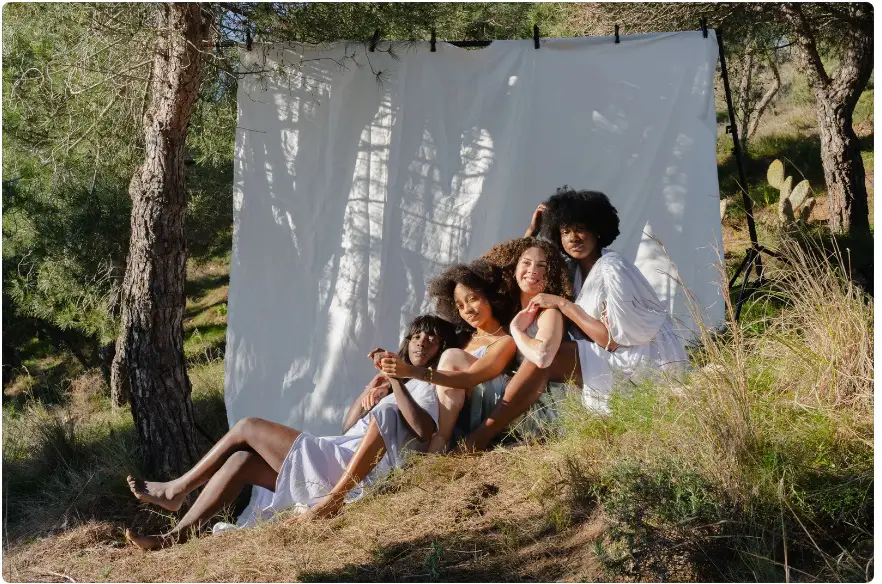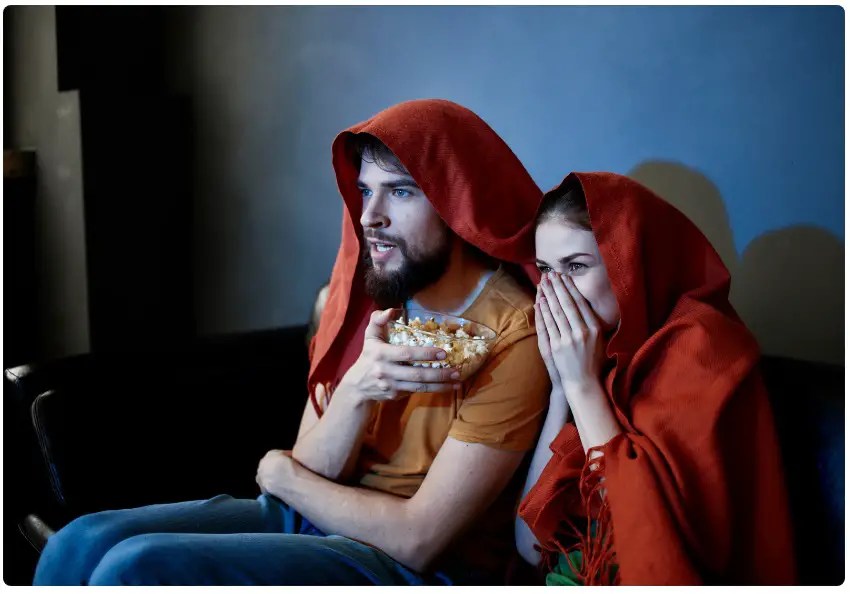The entertainment industry, often seen as invulnerable, is once again in tumult as writers picket and stages remain silent due to the latest writer’s strike. As scripted shows are put on an indefinite hiatus, there’s an inevitable ripple effect throughout the TV ecosystem.
While this might seem like a setback for TV aficionados, there’s another genre quietly gearing up to fill the void: reality television. This unscripted counterpart, which often thrives during such industry disruptions, offers viewers a glimpse into ‘real’ lives and dramas, contrasting starkly with the fictional worlds of scripted TV. But with this sudden surge, one can’t help but wonder if we’re on the brink of a reality TV overload. Are we about to be swamped with an excess of unscripted content? And what does this mean for the discerning viewer? Let’s delve into the profound impact the writer’s strike has on the world of reality television. Remember, we are just reality television fans, and this is our amateur opinions.
Contents
1. Historical Precedence: Past Strikes and Reality TV
The history of television is punctuated by several defining moments, among which writer’s strikes hold a special place. These industrial actions often reshape the TV landscape, and their impact reverberates through both content and audience preference. One of the most prominent strikes occurred in 1988, lasting 22 weeks. As scripted shows dwindled, networks had to scramble to find content that would retain audiences. This vacuum saw the advent of many reality shows, with networks capitalizing on their relatively low production costs and quicker turnaround times.
Shows like “COPS” and “America’s Most Wanted” emerged as products of the strike era, giving viewers a taste of real-life drama. The appeal was immediate and undeniable: raw emotions, unscripted reactions, and unpredictable outcomes. These programs marked a distinct shift from polished fictional narratives to gritty, real-life storylines. They were not just gap-fillers; they pioneered a genre that would go on to dominate TV in the coming decades.
2. The Immediate Response: Networks Scramble
Whenever the steady stream of scripted content gets disrupted, it poses a significant challenge to TV networks: how to keep the viewers engaged and the ratings up? With the current writer’s strike, networks find themselves in a familiar quandary. However, the solution also seems to lie in a tried-and-tested formula: reality television.
Reality shows, with their unscripted nature, have a few distinct advantages. Firstly, they can be produced at a fraction of the cost compared to scripted series. There are no high-profile actor salaries, no intricate sets, and often no elaborate post-production effects. Secondly, they can be turned around rapidly. From conception to broadcast, reality shows, especially those following a documentary style, can be produced in weeks rather than the several months a scripted series might require.
But it’s not just about filling airtime. Reality shows also provide networks with flexibility. They can be easily adapted, expanded, or cut short based on audience reactions. This flexibility ensures that networks can optimize content in real-time, responding swiftly to viewer demands and preferences. In the face of a writer’s strike, reality TV once again emerges not just as a stop-gap, but as a strategic tool for networks to navigate choppy waters.
3. Flood of New Shows: Quantity Over Quality?
In the aftermath of the writer’s strike, TV networks find themselves in uncharted territories. With a significant void to fill and the ever-present need to retain viewership, the natural recourse has been to pump out a plethora of reality TV shows. This unprecedented surge presents both opportunities and challenges. The upside is apparent: fresh content, diverse storylines, and a barrage of new faces. However, as the proverbial saying goes, “Too many cooks spoil the broth.”
The flood of reality shows risks saturating the market. It’s conceivable to question whether the push for quantity might eclipse the pursuit of quality. Reality TV, at its best, offers authentic narratives, compelling characters, and gripping drama. Yet, in the mad rush to fill airtime, networks might be tempted to lower their standards, leading to subpar content that fails to resonate with audiences.
Moreover, the discerning viewer is likely to notice any dip in content quality. With numerous options at their fingertips, viewers can easily switch to other genres or platforms if they feel overwhelmed or underwhelmed by the influx of reality shows. If networks don’t tread carefully, they might end up alienating the very audience they’re trying to retain.
4. Audience Adaptation: From Scripted Characters to Real Personalities
With scripted shows taking a backseat, audiences find themselves transitioning from fictional worlds to the real, raw, and often unpredictable realm of reality television. This shift isn’t just about a change in content but also about an adaptation in viewer expectations and preferences.
In scripted shows, audiences are accustomed to meticulously crafted narratives, consistent character arcs, and satisfying resolutions. These fictional worlds offer an escape, transporting viewers into alternate realities. Conversely, reality TV offers unpredictability. The drama is real, the stakes genuine, and outcomes uncertain.
However, this doesn’t imply that reality TV is any less captivating. Real-life personalities, with their genuine emotions, challenges, and triumphs, can be as compelling, if not more so, than fictional characters. In the absence of scripted shows, viewers are rediscovering the charm of real-life stories and the allure of real personalities.
It’s an intriguing dichotomy: while fictional characters provide an escape, real personalities offer relatability. As viewers navigate this shift, it will be fascinating to see how their preferences evolve and whether the unscripted charm of reality TV holds its ground in the long run.
5. Economic Impacts: Advertisers and the Reality TV Appeal
The writer’s strike doesn’t just affect networks and audiences; it also has profound implications for advertisers. The world of advertising thrives on predictability. Brands allocate vast budgets based on anticipated viewership of prime-time scripted shows. But with this cornerstone of television facing uncertainty, advertisers are prompted to recalibrate their strategies.
Enter reality TV. One of the innate strengths of reality shows is their adaptability. Unlike scripted series, reality TV can be tweaked based on current trends, feedback, and even advertiser needs. For instance, product placements can be woven seamlessly into a reality show’s narrative, offering brands a more integrated form of exposure.
Moreover, certain reality shows, particularly competitions or talent hunts, can amass dedicated viewership week after week. This consistent audience is a goldmine for advertisers. They can anticipate viewer numbers and demographics, making their ad placements more targeted and effective.
However, this relationship is symbiotic. Reality TV producers benefit from the influx of ad revenue, which can fund bigger and better productions. It’s a win-win: while advertisers find a flexible and receptive platform in reality TV, the genre itself gets the financial impetus to innovate and grow.
6. Reality TV’s Diversity: An Array of Genres and Niches
Reality television is often misconceived as a monolithic entity. In reality, it’s a diverse tapestry of sub-genres, each catering to distinct viewer preferences. From cooking competitions and talent hunts to survival challenges and relationship dramas, the world of reality TV is vast and varied.
This diversity is the genre’s saving grace in times of content saturation. Even if viewers feel overwhelmed with the sheer volume of reality content, the varied niches ensure that there’s something for everyone. A viewer disinterested in a celebrity dance-off might be engrossed in a wilderness survival challenge. Another who finds dating dramas trite might be captivated by entrepreneurial pitches in a business-centric show.
Furthermore, this diversity allows networks to target varied demographics. Different shows can cater to different age groups, interests, and lifestyles. It’s a content strategy that casts a wide net, ensuring that a broad spectrum of viewers finds something they relate to.
As the writer’s strike propels the proliferation of reality shows, this intrinsic diversity is likely to be the genre’s lifeline. It promises viewers a multifaceted experience, reducing the risk of genre fatigue and ensuring sustained interest.
7. Overexposure Risks: Reality TV Fatigue
There’s a thin line between abundance and over-saturation. As reality TV becomes the mainstay of primetime slots, there’s a looming risk of viewers facing ‘reality fatigue.’ While the genre offers an array of content, the sheer volume might be its own downfall. How much reality is too much reality?
It’s no secret that a part of reality TV’s charm lies in its novelty. The spontaneous reactions, unpredictable outcomes, and genuine emotions set it apart from scripted content. But as viewers are inundated with reality content, there’s a potential for the genre to lose its sheen. Repetitive formats, overlapping themes, or even the recurrent appearance of the same personalities across shows could dull the allure.
Furthermore, for viewers initially drawn to television for the escapism of scripted dramas, the incessant dose of ‘real-life’ narratives might become wearying. In the clamor for ratings and relevance, networks might inadvertently push viewers to a breaking point, causing them to seek alternative forms of entertainment, be it streaming platforms or other genres.
As reality TV’s prevalence grows, it’s imperative for networks to remain vigilant. It’s essential to strike a balance, ensuring variety and quality, lest viewers switch off due to overexposure.
8. The Dark Horse: Lesser-Known Scripted Shows Gaining Popularity
Every cloud has a silver lining, and for scripted television, the writer’s strike might inadvertently spotlight hidden gems. With current scripted productions at a standstill, viewers, hungry for structured narratives, could begin exploring lesser-known shows or series they might have missed.
Streaming platforms, with their vast libraries, play a pivotal role here. Platforms like Netflix, Hulu, and Amazon Prime offer a treasure trove of older or lesser-known scripted series. As viewers feel the pinch of the content drought on conventional TV, they might turn to these platforms to satiate their scripted show cravings.
This exploration could lead to the resurgence of shows that initially slipped under the radar. A series that might not have garnered mainstream attention during its original release could find a new lease of life and a devoted audience.
Moreover, this phenomenon underscores the timeless appeal of well-crafted stories. Even in the face of reality TV’s onslaught, there remains a dedicated segment of viewers who yearn for the depth, complexity, and artistry of scripted television. For these viewers, the writer’s strike might prove to be a blessing in disguise, guiding them to undiscovered narratives waiting to be cherished.
9. Talent Shift: Actors and Writers Exploring Reality TV
The entertainment industry is an ecosystem, where change in one segment often precipitates a shift in another. The writer’s strike, while halting scripted productions, inadvertently creates opportunities within the realm of reality TV for talents accustomed to scripted formats.
Actors, for instance, who are usually confined to the fictional worlds of their characters, may now find themselves presented with offers to host reality shows, judge talent competitions, or even star in reality formats centered around their own lives. Such transitions not only offer these talents a fresh challenge but also ensure their continued visibility in the public eye during the strike.
Similarly, writers, despite their primary craft being sidelined, might pivot to reality television in roles that aren’t immediately obvious. While reality shows are unscripted, they still require structured narratives, episode arcs, and engaging storytelling – elements that a writer can adeptly manage. Behind the scenes, writers can work as showrunners or consultants, guiding the overall direction of a reality series to ensure it resonates with audiences.
This blending of talent is a testament to the industry’s resilience. Even in the face of disruptions, creative minds find avenues to express themselves, innovate, and entertain. For viewers, this melding promises fresh perspectives and a unique fusion of the scripted and unscripted worlds.
10. The Aftermath: Predicting Post-Strike Television
As the dust eventually settles and the writer’s strike concludes, the television landscape will undoubtedly have undergone significant transformation. But what can we expect in the aftermath?
Firstly, the proliferation of reality TV during the strike might lead to a sustained prominence of the genre. Shows that garnered significant viewership would likely continue, and their success might pave the way for similar formats. The boundary between reality and scripted television may blur further, giving rise to hybrid genres that combine elements of both.
However, a pent-up demand for scripted content will also surge. Viewers will eagerly await the return of their favorite fictional worlds and characters. This renewed appetite offers networks an opportunity to launch new scripted series with the potential for high viewership.
The post-strike period will also be a litmus test for the lesser-known scripted shows that gained traction during the strike. Their sustained success could influence network decisions about renewals or spin-offs.
Lastly, the very nature of storytelling might evolve. The strike, and the resulting television dynamics, would have offered writers a fresh perspective. When they return to their desks, they might bring with them innovative narratives influenced by the real stories and characters that dominated the screens during the strike.
Conclusion
So as a reminder, we are just fans of reality television. We are not associated with shows or the making of television in any way. This is just our amateur opinion on how the strike will impact the viewing behavior of other fans like ourselves.
What are your thoughts on changes that will arise from the writer strike? Do you find yourself watching more or less reality television?




